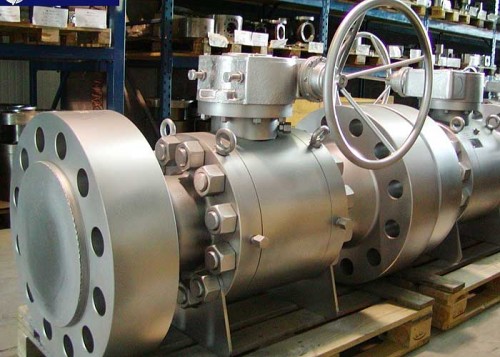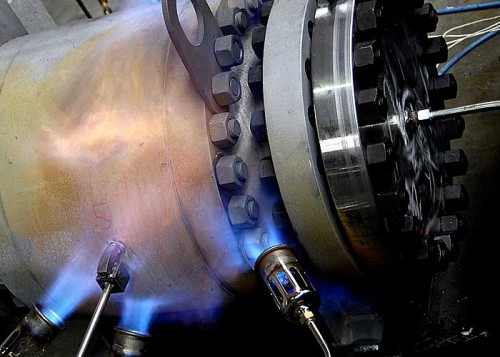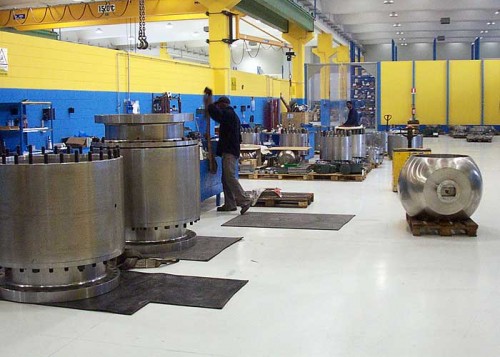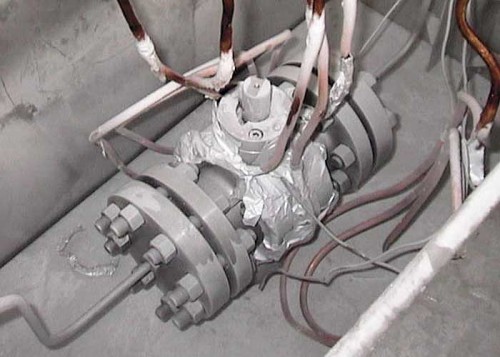Technology and Innovation

Engineering
FLUITEK ORSENIGO VALVES mission consists in providing quick and effective answers to its customers’ needs. Our problem solving approach is developed through the engineering of solutions and the product manufacturing, coupled with our knowledge and study of materials. FLUITEK ORSENIGO VALVES Engineering Organizations consists of a Product Development and the Engineering Department. The first is dedicated to research on materials and processes and the design and development of new solutions. The second is focused on product engineering with 15 people involved including engineers, designers, product specialists.
Fluidynamic computerized analysis
FLUITEK ORSENIGO VALVES can perform thermo-fluidynamic analysis on its products by means of a computerized calculation system (CFD, computational fluid dynamics). Valve design and construction details are improved with the use of virtual modeling techniques and “what-if” simulations. Data concerning pressure and velocity values, forces acting on the surfaces, temperatures and all the main physical variables can be provided to the customers.
Static analysis
With the line conditions as the input values, it is possible to evaluate pressure losses through the valves at different opening conditions, to optimize the flow path, to check the presence of anomalous local values of pressure, velocity or temperature, to evaluate the forces and torques acting on the shell or other valve components.
Dynamic analysis
Dynamic analysis is important for the valves operated by the process fluid itself (check valves), as it simulates the interaction between the fluid and the valve movable components. in fact, the disc motion is determined by the fluid speed and conditions, and the dynamic analysis evaluates the correct service parameters, defines the best disc shape, calculates valve opening and closing times, together with all the static analysis’ results.
Thermal analysis
Together with static and dynamic analysis it is possible to introduce the process fluid temperature in the calculation. when required, thermal convection and heat transfer and can be evaluated.
Validation
According to the standard en 1267 “test of flow resistance using water as test fluid”, FLUITEK ORSENIGO VALVES computerized models are actually validated with proper practical tests.

Quality
The main quality controls carried out by FLUITEK ORSENIGO VALVES are:
Dimensional Inspection
All necessary equipment in house Faro measuring arm.
Non Destructive Testing
- MT: Magnetic particles examination
- PT: Dye penetrant examination
- UT: Ultrasonic examination
- RT: Radiographic Examination Capability of shooting on site, x-ray films development and reading in house (ASME reference plates)
Pressure Test To
- API598 – ISO 5208 – BS 6755 – API 6A – API 6D – ASME B16.34 – EN 12266 – 1
- High Pressure Hydraulic Shell test
- High Pressure Hydraulic Back Seat test
- High Pressure Hydraulic Seat test
- Low Pressure Pneumatic Seat test
- Functional test
Tests equipment
- n. 3 Hydaulic & Pneumatic horizontal testing unit for valves DN 1/2″ to 16″, up to class 4500#
- n. 3 Hydaulic & Pneumatic vertical testing unit for valves DN 2″ to 16″, up to class 600#
- n. 1 Hydaulic & Pneumatic horizontal testing unit for valves DN 10″ to 48″, up to class 4500#
- n. 2 Hydaulic & Pneumatic horizontal testing unit for valves DN 1/2″ to 4″, up to class 10000#
- n. 1 Hydaulic & Pneumatic horizontal testing unit for valves DN 2,1/2″ to 20″, up to class 1500#
- n. 1 Hydaulic & Pneumatic horizontal testing unit for valves DN 2,1/2″ to 24″, up to class 1500#
- n. 1 Hydaulic & Pneumatic horizontal testing unit for valves DN 6″ to 36″, up to class 2500#
Chemical Analysis
- PMI: Positive material identification
- Mass spectrometer 16 channels
Mechanical Tests
- Hardness test
- Charpy-V impact test
Micrographic analysis
Available on Request:
- Fugitive emission test (helium/nitrogen)
- Cryogenic test
- Corrosion test
- Cleanliness for oxygen application
- Fire Safe tests
- High pressure gas tests
- Tensile test (including hot tensile)
- Hyperbaric Test for subsea application
- Torque test

Facilities
Key Machining Equipment
- n. 4 CNC Machining Centre (models 300, 450, 600, 900 Special tooling for forged valves) 4 axis multiplatable capable of lathe, milling, drilling, self monitor feedback system, with very strict tolerance capability. Table Capacity: From 10 Kg Up To 12 Tons.
- n. 7 CNC Machining Centre, 900mm max turnable diameter, DN up o 14″
- n. 4 Grinding Machine
- n. 1 CNC Machining Centre (2”-8” valve body size)
- n. 5 Lapping Machine
- n. 11 Horizontal Lathes
- n. 4 Drilling Machine
- n. 3 Sawing Machine
- n. 1 Grinding Machine, large size
Lifting Equipment
- n. 2 Overhead Crane 40 ton
- n. 3 Overhead Crane 15 ton
- n. 2 Overhead Crane 12 ton
- n. 2 Overhead Crane 10 ton
- n. 4 Overhead Crane 5 ton
- n. 2 Overhead Crane 40 ton
- n. 35 Overhead travelling crane 500 to 2000kg
- n. 22 fork trucks 500 to 8000kg
Welding
Welding Equipment and Personnel
ASME IX qualified welders and welding procedures (WPS/PQR) as well as per CE/PED requirements
Materials
Carbon & low alloy steel, Austenitic stainless steel, Ferritic and ferritic-austenitic stainless steel, Nickel alloys, Hard facing overlays
Methods
Gas Metal Arc Welding (GMAW), Shielded Metal Arc Welding (SMAW), Gas Tungsten Arc Welding (GTAW)
Main Equipment
1 GMAW welding equipment for stellite, nickel alloys coating, 4 GMAW welding equipments , 2 SMAW welding equipments
Heat treatment
2 on Site Heat Treatment Furnaces (1 gas operated and 1 electrical furnace) with:
Ceramic fiber lining
Temperature calibration per API 6A requirements
Heat treat cycle automatically controlled
Chart temperature recorder
Max dimension: 2m W; 3m L; 3m H
Max temperature up to 1200 °C (2192 °F)
Quench tank




